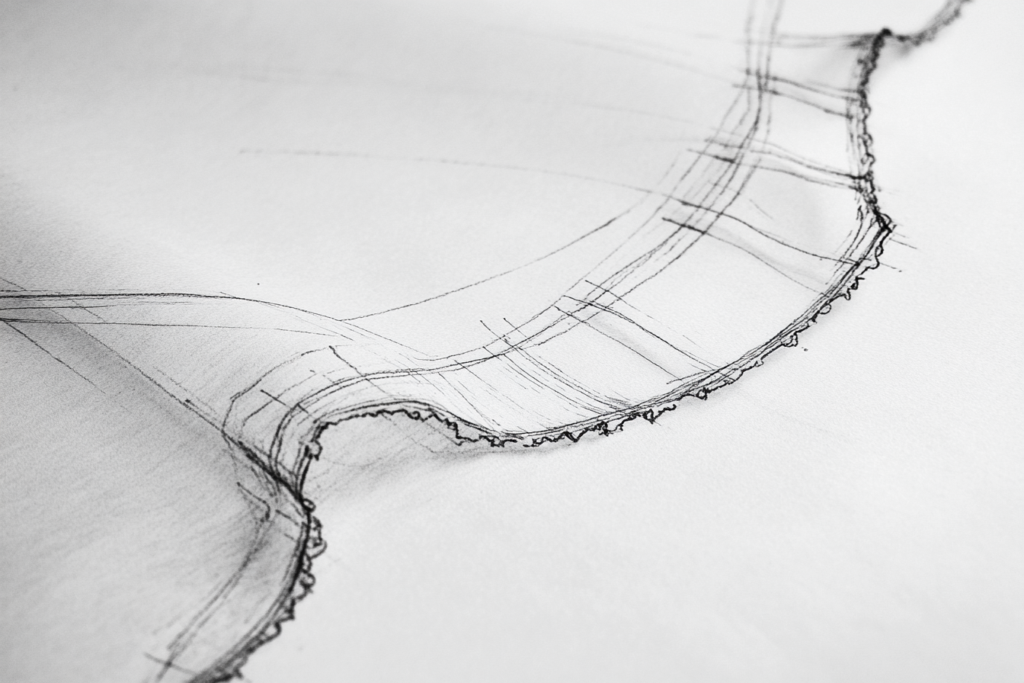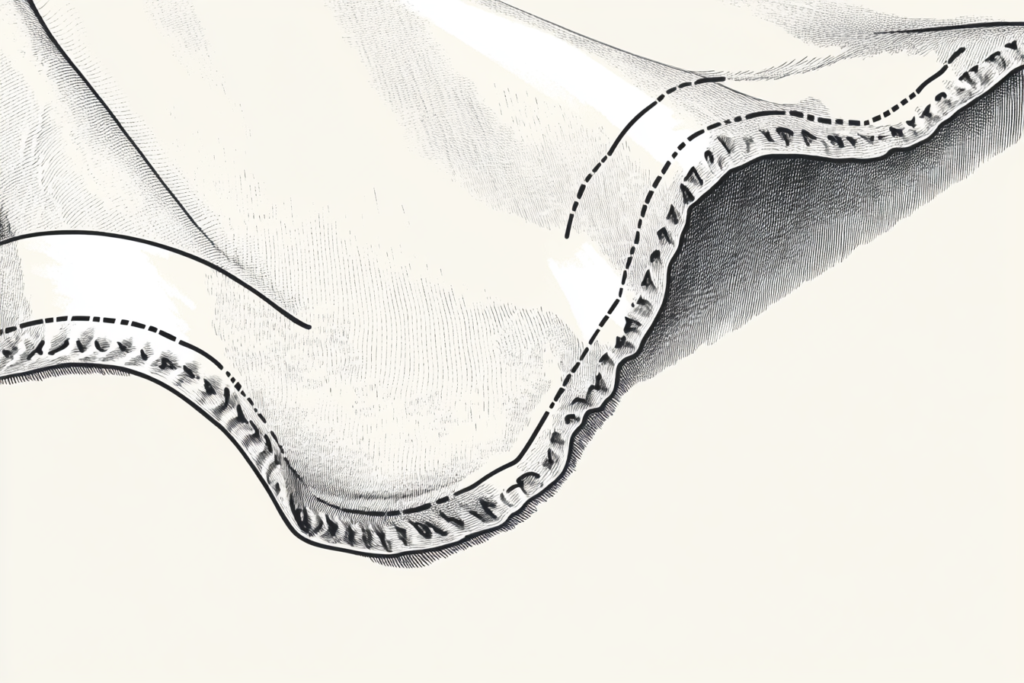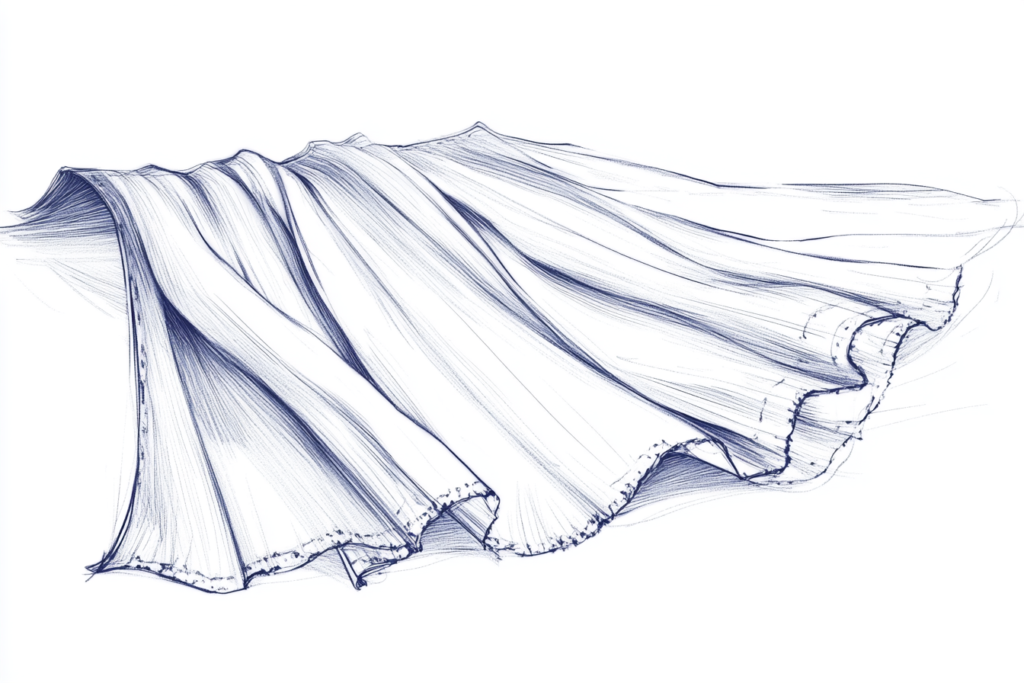Hem: The Finished Edge of a Garment
Meta Description: A hem is the finished edge of a garment, folded and stitched to prevent fraying and enhance durability. Learn about different hem types and their uses in fashion.
What is a Hem in Clothing?
A hem is the edge of a garment that has been folded and stitched to create a clean, finished look while preventing fraying. Hems are found in shirts, dresses, skirts, pants, sleeves, and even home textiles.
A well-sewn hem enhances the durability, structure, and overall appearance of a garment, ensuring a polished and professional finish.


Functions of a Hem
✔ Prevents Fraying – Secures raw fabric edges.
✔ Adds Strength & Durability – Reinforces the garment’s edge.
✔ Improves Aesthetic Appeal – Creates a clean, finished look.
✔ Adjusts Length – Used in tailoring to shorten or lengthen clothing.
Types of Hems in Sewing
Different hem styles are used based on fabric type, garment design, and function:
1. Double-Fold Hem
- The most common hem type, where the fabric is folded twice and stitched.
- Used in skirts, dresses, shirts, and pants.
2. Rolled Hem
- A very narrow, tightly folded hem, stitched to give a delicate finish.
- Common in lightweight fabrics like chiffon and silk.
3. Blind Hem
- A hem stitched with nearly invisible seams, making it appear seamless.
- Used in formalwear, trousers, and skirts.
4. Overlocked Hem (Serger Hem)
- Uses an overlock stitch to secure the fabric edge.
- Found in stretch fabrics, casualwear, and activewear.
5. Faced Hem
- A hem finished with an extra strip of fabric, creating a decorative or reinforced edge.
- Used in jackets, coats, and structured garments.
6. Lettuce Hem
- A wavy, ruffled edge, often seen in knitwear and trendy tops.
- Common in jersey, ribbed fabric, and stretch materials.
Where Are Hems Used in Fashion?
Hems are present in almost every garment and textile, including:
✔ Pants & Jeans – Finished with a double-fold or serged hem.
✔ Dresses & Skirts – Often use blind or rolled hems for elegance.
✔ Shirts & Blouses – Typically have narrow double-stitched hems.
✔ Sleeves & Cuffs – Require neatly sewn hems for a professional look.
✔ Scarves & Home Textiles – Finished with rolled hems for a polished effect.
How to Sew a Hem
- Measure & Mark – Decide the desired length and mark with fabric chalk.
- Fold & Press – Fold the fabric once or twice and press with an iron.
- Pin or Baste – Secure the hem with pins or temporary stitches.
- Sew the Hem – Use a straight stitch, blind stitch, or overlock stitch, depending on the fabric.
- Press Again – Iron the hem to ensure a smooth and clean finish.
Hem vs. Seam: What’s the Difference?
| Feature | Hem | Seam |
|---|---|---|
| Function | Finishes the garment’s edge | Joins two pieces of fabric |
| Location | Found at the bottom or sleeve edges | Found along garment panels |
| Purpose | Prevents fraying & enhances aesthetics | Provides garment structure & fit |
While a hem finishes a garment’s edge, a seam connects different fabric sections together.
Why Are Hems Important?
✔ Maintains Garment Shape – Keeps clothing looking structured and well-fitted.
✔ Adds Longevity – Prevents wear and tear at the fabric’s edge.
✔ Allows for Tailoring – Easily adjusted for personalized fits and alterations.
✔ Enhances Style – A well-sewn hem completes the garment’s overall look.
Conclusion: The Importance of Hems in Fashion
A hem is a small but essential detail that defines the quality, durability, and style of a garment. Whether in casualwear, formalwear, or textiles, hems ensure a refined, long-lasting finish, making them a key element in fashion design and sewing.
From rolled hems on silk scarves to double-fold hems on jeans, this finishing touch plays a crucial role in everyday clothing and couture fashion alike.



